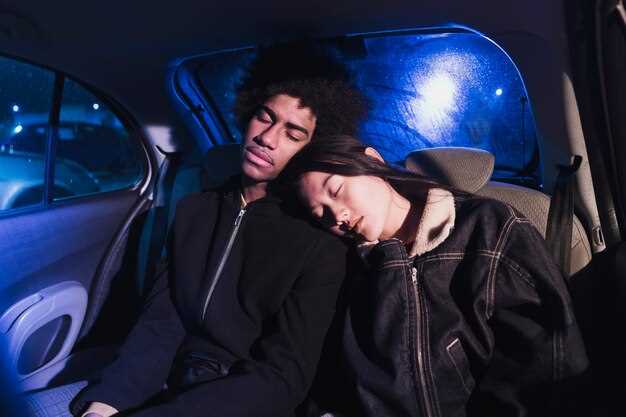
As the sun sets, the thrill of riding a motorcycle or cycling under the stars can be exhilarating. However, this enjoyment comes with its own set of challenges, particularly when it comes to night safety. Both cyclists and motorists face increased risks during nighttime rides, making awareness and preparation essential for a safe journey.
Visibility is significantly reduced at night, and obstacles that may be easily spotted during daylight hours can become perilous in low light conditions. This emphasizes the need for both cyclists and motorists to adopt safe riding practices to protect themselves and each other. Understanding the unique challenges of nighttime riding is the first step in ensuring that every ride is not only enjoyable but also safe.
In this article, we will explore crucial tips for achieving safety while riding after dark. From enhancing visibility to adopting defensive riding techniques, these guidelines aim to equip both motorcycle riders and cyclists with the knowledge needed to navigate night roads confidently and securely. Let’s dive into the essential strategies that will help you stay safe on your nightly adventures.
Choosing and Using Proper Lighting for Visibility

Effective lighting is essential for both cyclists and motorcyclists when it comes to riding safely at night. The primary goal of proper lighting is to enhance visibility, allowing riders to see their surroundings and be seen by other road users. When selecting lights, consider brightness, battery life, and placement.
For motorcycles, a bright headlight is crucial. It’s recommended to use high-intensity discharge (HID) or LED headlights, as they provide a wider and more powerful beam compared to traditional halogen bulbs. Additionally, using auxiliary lights can further improve your visibility, especially during adverse weather conditions or low-light scenarios.
Cyclists should equip their bikes with a front white light and a rear red light. The front light should be bright enough to illuminate the road ahead, while the rear light should be visible from a distance to alert motorists. Flashing lights are particularly effective for increasing visibility, as they draw attention to the rider.
Placement of lights plays a critical role in effective visibility. For motorcycle riders, ensuring that the headlight is properly aligned and clean will maximize illumination. Cyclists should attach their lights at eye level, avoiding any obstructions, to ensure they are clearly visible from various angles.
Regularly checking the functionality of lights is vital. Ensure that batteries are charged or replaced as needed, and clean any dirt or debris that may obstruct the light output. Investing in high-quality, durable lights will enhance safety during night rides.
Proper lighting not only aids in visibility but also promotes confidence among riders. By following these guidelines, cyclists and motorcyclists can significantly enhance their safety and experience while riding at night.
Understanding Road Hazards Unique to Night Riding
Night riding poses distinct challenges for both cyclists and motorcyclists that require heightened awareness and adaptability. The visibility conditions are significantly altered after dark, which can lead to various hazards that are less prevalent during daylight.
One of the primary risks is reduced visibility of road signs, markings, and obstacles. At night, the range of vision diminishes, making it harder to spot hazards such as potholes, debris, or uneven surfaces. Motorcyclists should be vigilant, as even minor road imperfections can lead to accidents.
Another important factor is the behavior of other road users. Drivers of cars and trucks may not see motorcyclists or cyclists, especially if they are not equipped with reflective gear or proper lighting. The glare from oncoming headlights can also momentarily blind riders, emphasizing the need for heightened caution.
Wildlife is another potential hazard unique to night riding. Animals are often more active after dark, and they may unexpectedly cross the road, posing a risk to motorcyclists who may have limited reaction time. Riders should stay aware of their surroundings, especially in rural areas where animals are more likely to be present.
Finally, environmental factors, such as fog or rain, can exacerbate night riding hazards. These conditions can further limit visibility and affect traction, making it essential for riders to adjust their speed and riding techniques accordingly to maintain safety.
In conclusion, understanding these unique nighttime road hazards is crucial for ensuring safety while riding a motorcycle at night. Proper preparation, heightened awareness, and the use of appropriate safety gear can significantly mitigate risks associated with night riding.
Implementing Defensive Riding Techniques After Dark

When riding a motorcycle at night, visibility becomes a significant concern that affects safety. It’s essential to adopt defensive riding techniques to minimize risks associated with low light conditions. One effective approach is to increase your following distance. This allows for more reaction time in case of sudden stops or obstacles that may be harder to see in the dark.
Always wear high-visibility gear, including reflective vests or jackets. These garments improve your presence on the road, making it easier for other motorists to spot you. Additionally, keep your motorcycle’s headlights in optimal condition and consider using auxiliary lights to enhance visibility further.
Anticipating the movements of other vehicles is critical in defensive riding during nighttime. Be aware that drivers of cars may be less alert or misjudge your speed due to the darkness. Hence, always expect the unexpected by staying attentive to potential hazards and the behavior of nearby vehicles.
Moreover, reducing speed is crucial when navigating poorly lit areas. Slower speeds provide more time to react to unforeseen obstacles, such as potholes or animals crossing the road. Be particularly cautious when approaching intersections, as visibility is often poorer in these locations.
Finally, utilizing your motorcycle’s horn judiciously can alert nearby motorists of your presence. Avoid aggressive maneuvers and remain calm, which can prevent accidents during nighttime rides. By incorporating these defensive techniques, riders can significantly enhance their safety while enjoying the experience of riding after dark.
